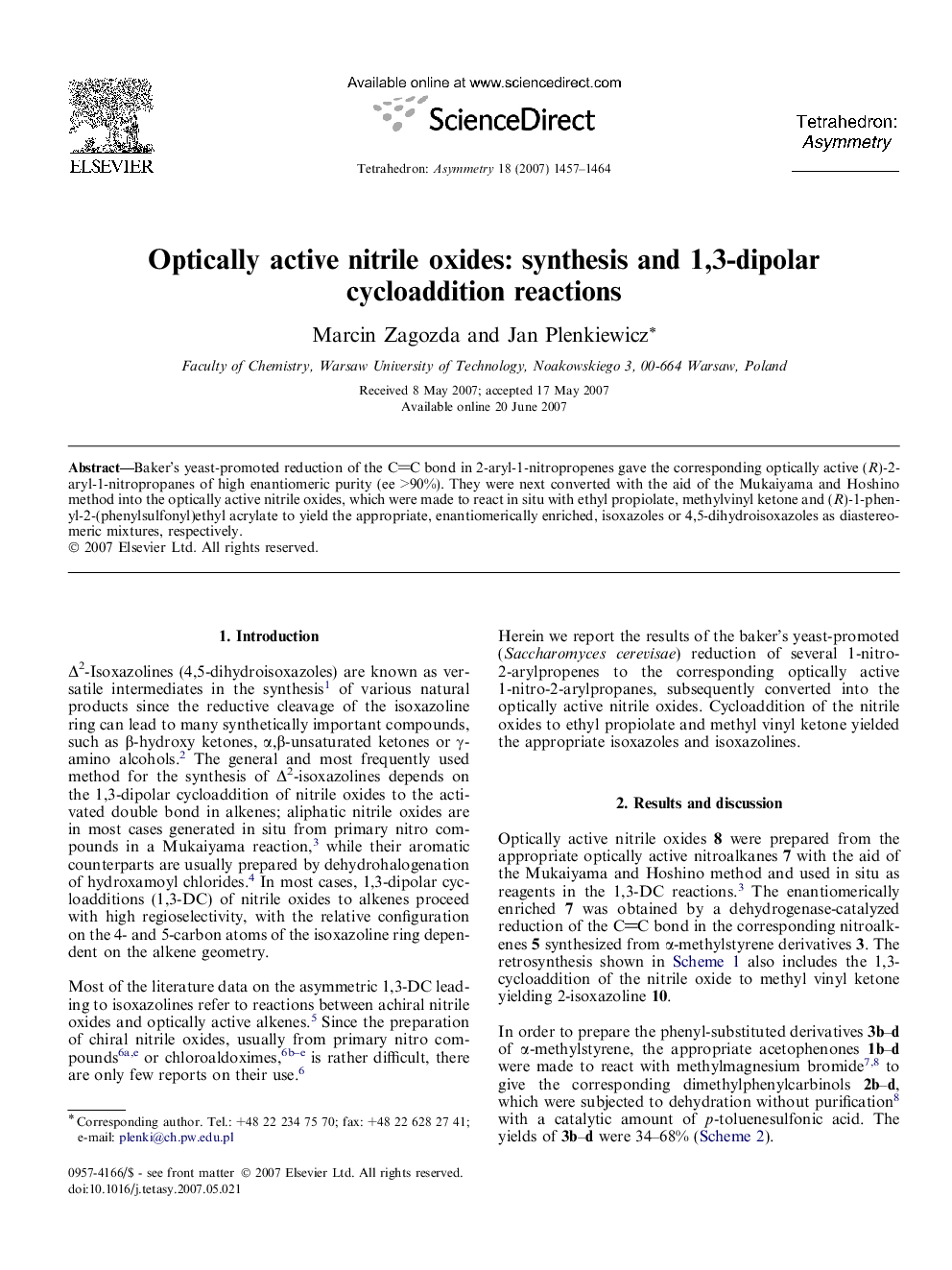| Article ID | Journal | Published Year | Pages | File Type |
|---|---|---|---|---|
| 1348429 | Tetrahedron: Asymmetry | 2007 | 8 Pages |
Baker’s yeast-promoted reduction of the CC bond in 2-aryl-1-nitropropenes gave the corresponding optically active (R)-2-aryl-1-nitropropanes of high enantiomeric purity (ee >90%). They were next converted with the aid of the Mukaiyama and Hoshino method into the optically active nitrile oxides, which were made to react in situ with ethyl propiolate, methylvinyl ketone and (R)-1-phenyl-2-(phenylsulfonyl)ethyl acrylate to yield the appropriate, enantiomerically enriched, isoxazoles or 4,5-dihydroisoxazoles as diastereomeric mixtures, respectively.
Graphical abstractFigure optionsDownload full-size imageDownload as PowerPoint slide
(R)-(+)-2-Nitro-1-phenylpropaneC9H11NO2Ee = 98%[α]D30=+42.0 (c 1.91 CHCl3)Source of chirality: microbial reductionAbsolute configuration: (R)
(R)-(+)-2-Nitro-1-(4-chlorophenyl)propaneC9H10ClNO2Ee = 91%[α]D31=+37.0 (c 2.11 CHCl3)Source of chirality: microbial reductionAbsolute configuration: (R)
(R)-(+)-2-Nitro-1-(4-methylphenyl)propaneC10H13NO2Ee = 97%[α]D27=+39.2 (c 2.01 CHCl3)Source of chirality: microbial reductionAbsolute configuration: (R)
(R)-(+)-2-Nitro-1-(4-methoxyphenyl)propaneC10H13NO3Ee = 99%[α]D28=+43.7 (c 1.02 CHCl3)Source of chirality: microbial reductionAbsolute configuration: (R)
(−)-Ethyl 3-[(1R)-1-phenylethyl]isoxazole-5-carboxylateC14H15NO3Ee = 98%[α]D28=-36.6 (c 0.63 CHCl3)Source of chirality: chiral substrateAbsolute configuration: (R)
(−)-Ethyl 3-[(1R)-1-(4-chlorophenyl)ethyl]isoxazole-5- carboxylateC14H14ClNO3Ee = 91%[α]D28=-27.7 (c 1.08 CHCl3)Source of chirality: chiral substrateAbsolute configuration: (R)
(R)-(−)-2-Chloro-1-phenylethanolC8H9ClOEe = 95%[α]D23=-51.4 (c 1.02 CHCl3)Source of chirality: kinetic resolutionAbsolute configuration: (R)
